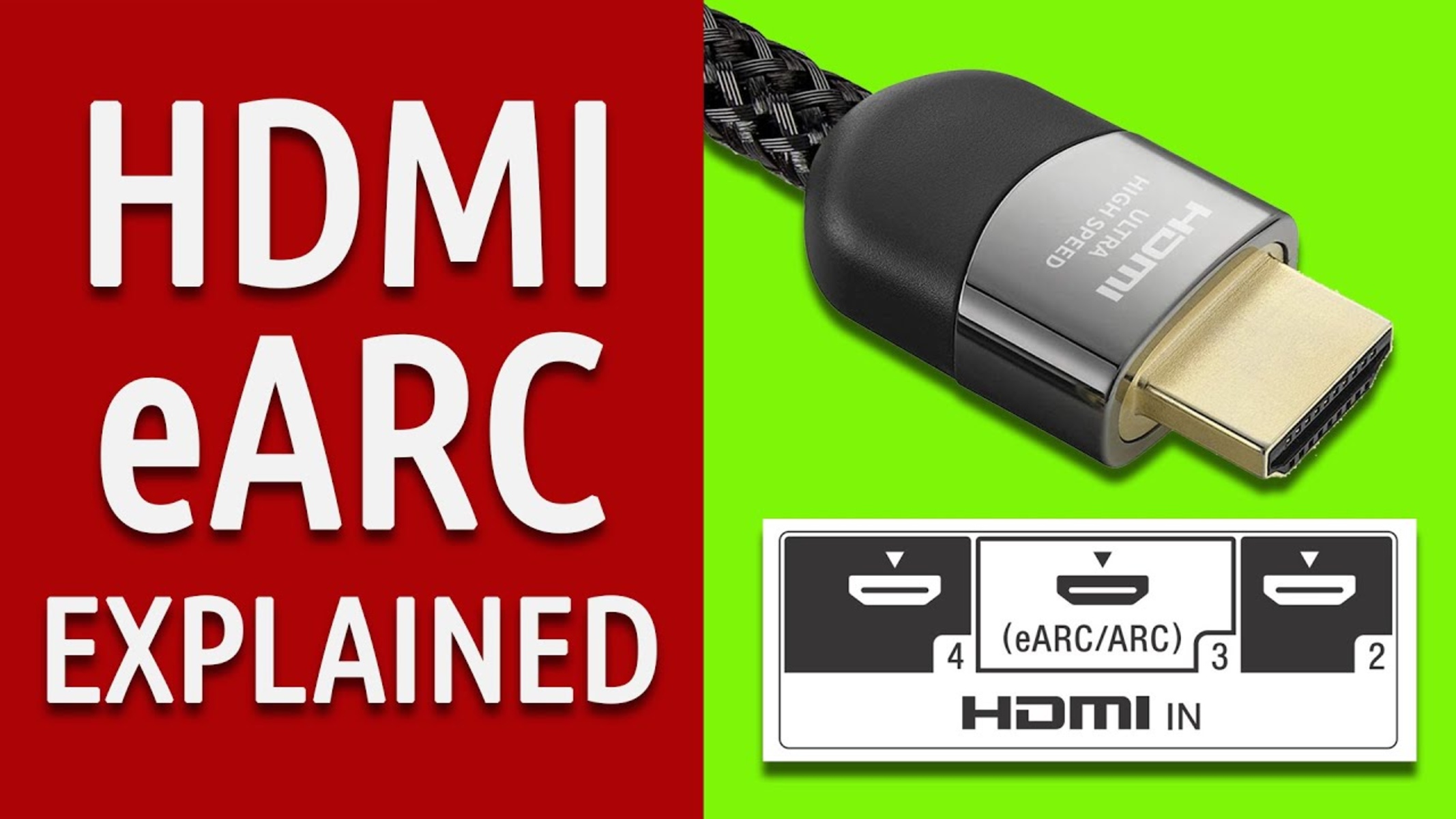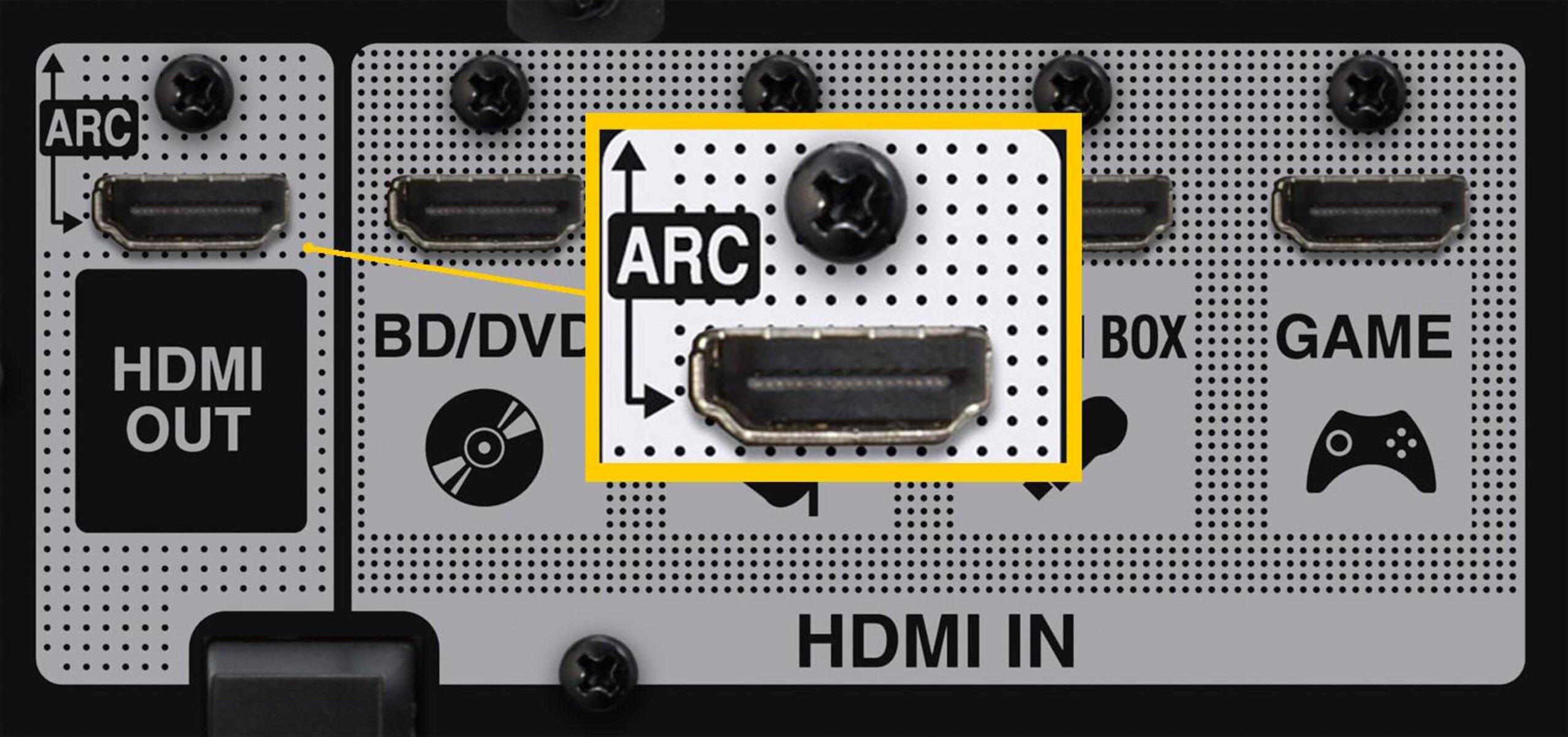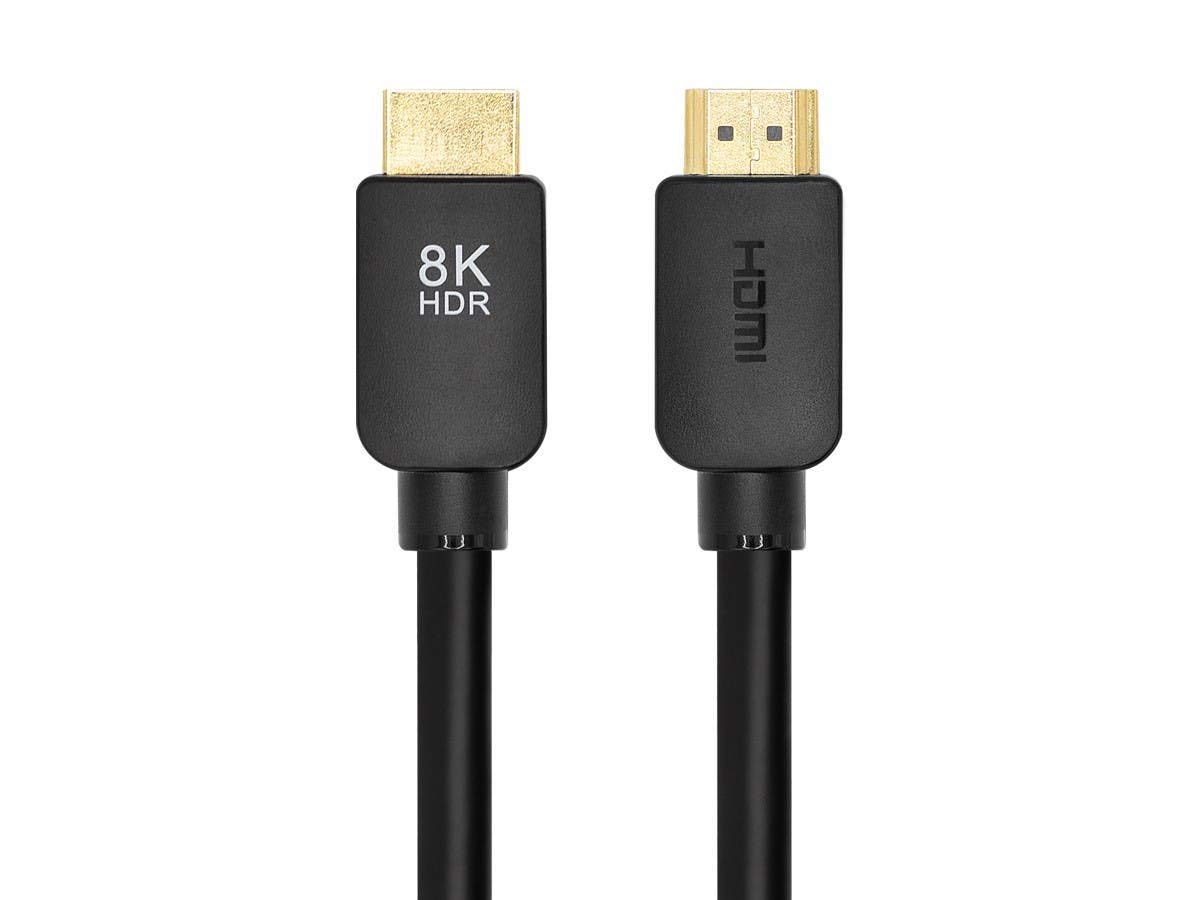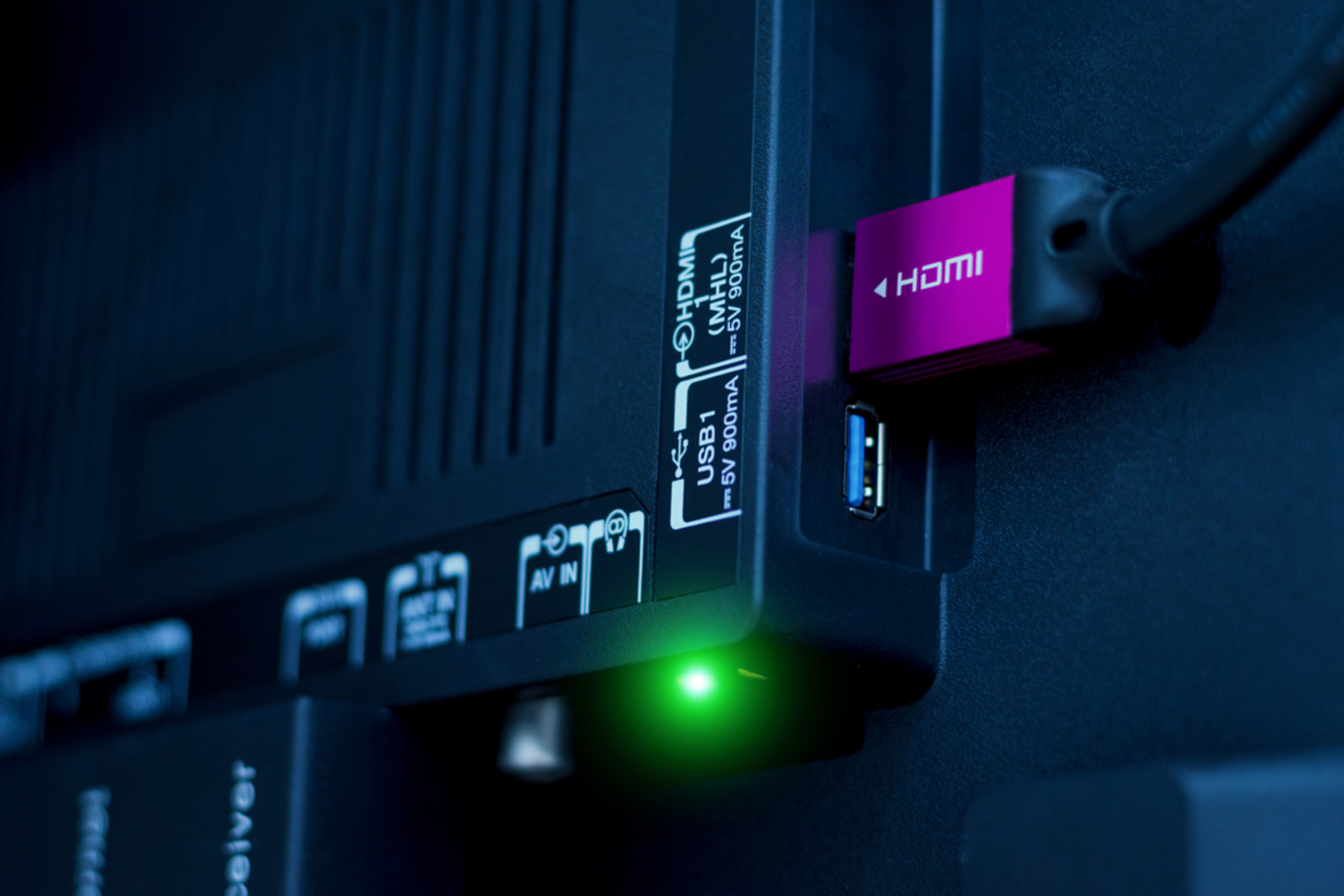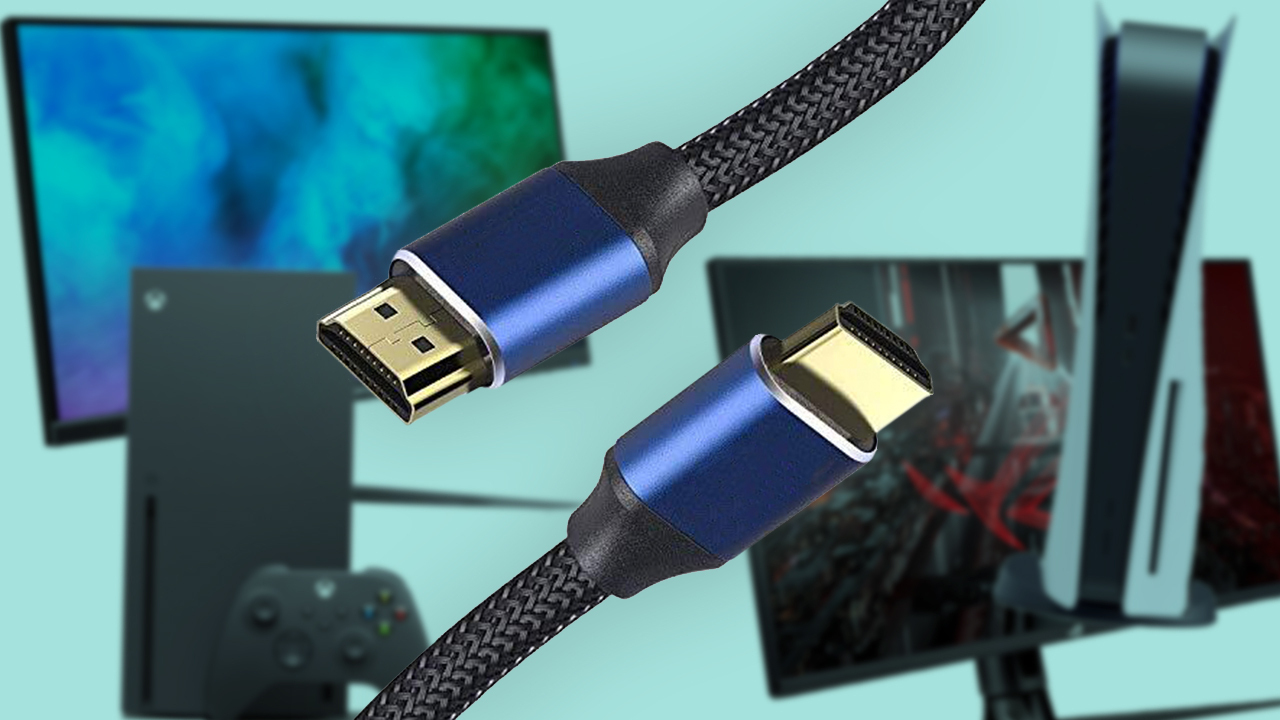Introduction
Welcome to the world of High-Definition Multimedia Interface Enhanced Audio Return Channel, commonly known as HDMI eARC. In today’s digital age, where audio and video quality are of utmost importance, HDMI eARC has emerged as a crucial technology for transmitting high-quality audio signals between devices.
HDMI eARC is an enhanced version of the popular HDMI ARC (Audio Return Channel) technology. It allows for the transmission of high-quality audio formats, such as Dolby Atmos and DTS:X, from a smart TV to an AV receiver or soundbar with just a single HDMI cable. This means you can experience immersive surround sound and enjoy a theatrical audio experience in the comfort of your own home.
Unlike its predecessor, HDMI eARC supports higher bandwidths and enables faster transmission speeds, resulting in improved audio fidelity and reduced latency. This makes it the ideal solution for home theater enthusiasts, gamers, and anyone who appreciates high-quality audio.
In this article, we will explore the benefits of HDMI eARC, discuss the differences between HDMI eARC and HDMI ARC, learn how to use HDMI eARC, and explore some common troubleshooting issues that you may encounter. So, let’s dive in!
What is HDMI eARC?
HDMI eARC, which stands for Enhanced Audio Return Channel, is an advanced audio technology that is an evolution of the HDMI ARC (Audio Return Channel) technology. It allows for the seamless transmission of high-quality audio signals from a television to an audio device, such as an AV receiver or soundbar, using a single HDMI cable.
With HDMI eARC, you can enjoy immersive audio formats like Dolby Atmos and DTS:X, which deliver multidimensional sound that moves around you, creating a realistic and captivating audio experience. This technology enables the transmission of these high-quality audio streams, including object-based audio formats, from your TV to your audio device without any degradation in quality.
HDMI eARC ensures that there is a bidirectional flow of audio data between the TV and the connected audio device. This means that you can enjoy high-quality audio from any source connected to your TV, such as cable/satellite boxes, gaming consoles, or streaming devices, and have it played back on your audio device without the need for additional connections.
Furthermore, HDMI eARC supports higher bandwidths and advanced audio codecs, allowing for uncompressed and lossless transmission of audio signals. This means that you can experience audio with exceptional clarity, detail, and depth, enhancing your overall entertainment experience.
It’s important to note that HDMI eARC is backward compatible with older HDMI versions and devices that support HDMI ARC. However, for the full benefits of HDMI eARC, both the TV and the audio device need to support this technology.
Now that we have a basic understanding of what HDMI eARC is, let’s explore the advantages it offers over its predecessor, HDMI ARC, in the next section.
Benefits of HDMI eARC
HDMI eARC boasts numerous benefits that enhance your audio experience and simplify the connectivity of your home theater system. Let’s delve into some of the key advantages of this advanced audio technology:
1. Enhanced Audio Quality: HDMI eARC supports the transmission of high-quality audio formats, such as Dolby Atmos and DTS:X. These audio formats deliver immersive, multidimensional sound, allowing you to experience movies, music, and games with exceptional clarity, detail, and depth.
2. Simplified Connectivity: With HDMI eARC, you can connect your audio device, such as an AV receiver or soundbar, directly to your TV with a single HDMI cable. This eliminates the need for multiple cables and simplifies the setup process, making it more convenient and tidier.
3. Backward Compatibility: HDMI eARC is backward compatible with HDMI ARC and older HDMI versions. This means that you can still enjoy the benefits of HDMI eARC even if your TV or audio device only supports HDMI ARC. However, for the full benefits and features of HDMI eARC, both the TV and the audio device should support this technology.
4. Bidirectional Audio: Unlike HDMI ARC, which only supports the transmission of audio from the TV to the audio device, HDMI eARC enables bidirectional audio flow. This means that you can enjoy high-quality audio from various sources connected to your TV and have it played back on your audio device without any degradation in quality.
5. Reduced Latency: HDMI eARC supports advanced audio codecs and higher bandwidths, which result in reduced audio latency. This is particularly crucial for gamers, as it ensures synchronized audio and video, providing a seamless and immersive gaming experience.
6. Future-Proofing: As HDMI eARC becomes increasingly adopted by TV manufacturers, investing in eARC-compatible devices ensures that your home theater system is future-proofed. It allows you to take advantage of upcoming audio technologies and formats without the need for hardware upgrades.
These are just a few of the many benefits that HDMI eARC brings to your audio setup. It enhances audio quality, simplifies connectivity, and provides a more immersive and enjoyable entertainment experience. In the next section, we will explore the differences between HDMI eARC and HDMI ARC.
Differences between HDMI eARC and HDMI ARC
While HDMI eARC and HDMI ARC share similarities, there are some significant differences between these two audio technologies. Let’s take a closer look at the distinctions:
1. Bandwidth and Audio Support: HDMI eARC supports higher bandwidths than HDMI ARC, allowing for the transmission of uncompressed and lossless audio formats. This means HDMI eARC can handle advanced audio codecs, such as Dolby Atmos and DTS:X, delivering superior audio quality compared to HDMI ARC.
2. Audio Channel Capacity: HDMI eARC supports up to 32 audio channels, enabling the transmission of immersive audio experiences with complex soundscapes. In contrast, HDMI ARC is limited to transmitting up to 8 audio channels.
3. Bidirectional Communication: While HDMI ARC allows audio to flow from the TV to the audio device, HDMI eARC supports bidirectional audio communication. This means you can enjoy high-quality audio from various sources connected to your TV and have it played back on your audio device without compromising sound quality.
4. Increased Data Transfer Speed: HDMI eARC offers faster data transfer speeds, reducing audio latency and ensuring synchronized audio and video playback. This makes it ideal for gaming and other applications where real-time audio is critical.
5. Compatibility: HDMI eARC is backward compatible with HDMI ARC and older HDMI versions. However, HDMI eARC requires both the TV and the audio device to support this technology to fully leverage its advanced features. HDMI ARC, on the other hand, can work with HDMI eARC devices, although it won’t provide the same level of audio quality and functionality.
6. Cabling: Both HDMI eARC and HDMI ARC require an HDMI cable to connect the TV to the audio device. However, HDMI eARC mandates an HDMI High Speed cable with Ethernet, whereas HDMI ARC can function with a standard HDMI cable.
In summary, HDMI eARC offers superior audio quality, increased channel capacity, bidirectional communication, faster data transfer speeds, and compatibility with previous HDMI versions. These advancements make HDMI eARC the preferred choice for those seeking a premium audio experience and seamless connectivity in their home theater setup.
Now that we understand the differences between HDMI eARC and HDMI ARC, let’s move on to learning how to use HDMI eARC in the next section.
How to Use HDMI eARC
Setting up and using HDMI eARC is relatively simple, but it does require specific steps to ensure proper functionality. Follow these guidelines to use HDMI eARC effectively:
1. Check Device Compatibility: Before using HDMI eARC, ensure that your TV and audio device support this technology. Look for the HDMI eARC logo or check the specifications of your devices in the user manual or manufacturer’s website.
2. Connect the HDMI Cable: Use an HDMI High Speed cable with Ethernet to connect the eARC HDMI port on your TV to the eARC HDMI port on your audio device. Ensure that both ends of the cable are securely plugged in.
3. Enable eARC on Your Devices: Access the settings menu on both your TV and audio device to enable eARC. Refer to the user manual or manufacturer’s instructions for specific instructions on how to enable this feature. Once eARC is enabled, the TV and audio device will establish a communication link.
4. Set the Audio Output on Your TV: On your TV’s settings menu, locate the audio output options. Select HDMI eARC as the audio output source to ensure that audio signals are directed to your connected audio device instead of the TV’s built-in speakers.
5. Configure Audio Settings on Your Audio Device: Access the settings menu on your audio device to configure audio settings according to your preferences. This may include setting up the audio format, speaker configurations, and other audio enhancements. Consult the audio device’s user manual for detailed instructions.
6. Test the Audio Connection: Play audio or video content on your TV to test the audio connection. Ensure that the audio is being output through your audio device and that the sound quality is optimal. Make any necessary adjustments to the audio settings on both the TV and audio device to achieve the desired audio performance.
7. Troubleshoot if Necessary: If you encounter any issues with the HDMI eARC connection, such as no audio output or unstable audio, refer to the troubleshooting section in your TV or audio device’s user manual. Common troubleshooting steps may include checking cable connections, power cycling devices, or updating firmware.
By following these steps, you can effectively set up and utilize HDMI eARC to enjoy high-quality audio from your TV through your audio device. Remember to consult the user manuals or contact the manufacturer’s support if you require specific instructions for your devices.
Compatible Devices with HDMI eARC
HDMI eARC is a relatively new technology that is being increasingly adopted by manufacturers to provide enhanced audio capabilities. Here are some of the devices that are compatible with HDMI eARC:
1. Smart TVs: Many modern smart TVs support HDMI eARC. Look for models from major brands like Samsung, LG, Sony, and Panasonic that feature HDMI eARC connectivity. These TVs allow you to take full advantage of HDMI eARC to enjoy high-quality audio from various sources.
2. AV Receivers: AV receivers are crucial components of a home theater setup, and many newer models now come with HDMI eARC support. These receivers allow you to connect your TV and other audio devices, such as speakers and gaming consoles, through HDMI eARC for immersive and high-quality audio reproduction.
3. Soundbars: Soundbars are popular audio devices for enhancing the audio quality of TVs. Many soundbars now come equipped with HDMI eARC inputs, allowing for seamless audio integration with HDMI eARC compatible TVs. With HDMI eARC, soundbars can deliver immersive surround sound and support advanced audio formats.
4. Streaming Devices: Some streaming devices, such as Apple TV 4K, Roku Ultra, and Amazon Fire TV Stick 4K, offer HDMI eARC compatibility. These devices allow you to stream content from various platforms and enjoy the high-quality audio experience that HDMI eARC provides.
5. Gaming Consoles: HDMI eARC can also be found in newer gaming consoles, such as the PlayStation 5 and Xbox Series X/S. These consoles offer an immersive gaming experience with advanced audio effects, and HDMI eARC ensures that you can enjoy the full benefits of high-quality audio while playing your favorite games.
6. Blu-ray Players: Some Blu-ray players also feature HDMI eARC support, enabling you to enjoy lossless audio formats when playing movie discs. Check the specifications of Blu-ray players from manufacturers like Sony, Panasonic, and Philips to find models that are compatible with HDMI eARC.
It’s important to note that not all devices in a particular category may support HDMI eARC. It’s always recommended to check the product specifications or consult with the manufacturer to ensure compatibility with HDMI eARC before making a purchase.
As HDMI eARC becomes more prevalent, the range of compatible devices is expected to expand. Whether you’re setting up a home theater system, upgrading your audio setup, or looking for the latest gaming console, considering HDMI eARC compatibility ensures that you can enjoy the highest audio quality and seamless connectivity for an exceptional entertainment experience.
HDMI eARC vs. Optical Audio
When it comes to transmitting audio signals from your television to an audio device, you have a few options. Two commonly used methods are HDMI eARC and optical audio (also known as TOSLINK). Let’s compare HDMI eARC and optical audio to understand their differences:
1. Audio Quality: HDMI eARC supports the transmission of high-quality audio formats, including lossless and uncompressed formats like Dolby Atmos and DTS:X. This ensures a superior audio experience with exceptional clarity, detail, and depth. On the other hand, optical audio is limited in bandwidth and can only support compressed formats, resulting in a slightly lower audio quality compared to HDMI eARC.
2. Bandwidth and Data Transfer: HDMI eARC supports higher bandwidths, allowing for the transmission of more audio channels and advanced audio codecs. It also offers faster data transfer speeds, reducing latency and ensuring synchronized audio and video playback. Optical audio, on the other hand, has a lower bandwidth and data transfer rate, limiting the audio capabilities and potentially causing delays in audio playback.
3. Ease of Connectivity: HDMI eARC requires a single HDMI cable to connect your TV to the audio device, providing a simple and streamlined setup process. In contrast, optical audio requires a separate TOSLINK cable to establish the audio connection. This can lead to additional cable clutter and may be less convenient for some users.
4. Compatibility: HDMI eARC is backward compatible with HDMI ARC and older HDMI versions, ensuring compatibility with a wide range of devices. On the other hand, optical audio is a widely accepted standard, but it may not be supported by all devices. It is important to check the compatibility of your TV and audio device before opting for optical audio connectivity.
5. Additional Audio Features: HDMI eARC supports advanced audio features like CEC (Consumer Electronics Control) and lip-sync correction, allowing for easier control of multiple devices and ensuring audio-video synchronization. Optical audio does not support these additional features and may require manual adjustments for lip-sync correction.
6. Distance Limitations: Optical audio has a limited transmission distance, typically around 5 to 10 meters. HDMI eARC, on the other hand, can transmit audio signals over longer distances without any loss in quality. This makes HDMI eARC more suitable for larger home theater setups or when the audio device is located farther away from the TV.
In summary, HDMI eARC offers superior audio quality, higher bandwidth and data transfer rates, a simplified connectivity process, and compatibility with a wide range of devices. Optical audio, on the other hand, provides a more basic audio connection and is suitable for simpler setups or devices that do not support HDMI eARC. Consider your specific audio needs and the compatibility of your devices when choosing between HDMI eARC and optical audio.
Next, let’s discuss some common troubleshooting issues that you may encounter with HDMI eARC.
Common Troubleshooting Issues with HDMI eARC
While HDMI eARC simplifies audio connectivity and enhances your audio experience, you may encounter some common issues that can be resolved through troubleshooting. Let’s explore some of these issues and their potential solutions:
1. No Audio Output: If you’re not getting any audio output through HDMI eARC, check the following:
– Ensure that both your TV and audio device are powered on and properly connected.
– Verify that the HDMI eARC ports on both devices are enabled and configured correctly in the settings menu.
– Check the volume settings on both devices and make sure they are not muted or set to a very low level.
– Try using a different HDMI cable, as the cable may be faulty or not compatible with HDMI eARC.
2. Audio Dropouts or Distortion: If you’re experiencing audio dropouts or distortion, try the following troubleshooting steps:
– Check for any loose or damaged cables and ensure a secure connection between the TV and audio device.
– Verify that the HDMI eARC ports on both devices are clean and free from debris, as dust or dirt can interfere with the signal transmission.
– Update the firmware of both your TV and audio device to the latest versions, as outdated firmware can sometimes cause audio issues.
– Try resetting both devices to their factory default settings and reconfiguring the HDMI eARC connection.
3. Lip-Sync Issues: If you notice a delay between the audio and video, commonly referred to as lip-sync issues, consider the following troubleshooting steps:
– Check the audio settings on both your TV and audio device. Look for any audio delay or lip-sync adjustment options and try adjusting them to synchronize the audio and video playback.
– Ensure that your TV’s picture settings are not causing any delay. Some picture enhancement features, like motion smoothing or video processing, can introduce a delay that affects lip-sync.
– If your audio device has a lip-sync adjustment feature, try enabling it and adjusting the timing to match the audio with the video.
4. Inconsistent HDMI eARC Connection: If you’re experiencing intermittent or unstable HDMI eARC connection, try the following troubleshooting steps:
– Ensure that the HDMI eARC ports on both your TV and audio device are securely connected.
– Check for any bent or damaged pins on the HDMI cables and ports, as this can affect the connection stability.
– Try using a different HDMI cable, preferably a high-quality cable that supports HDMI eARC.
– Power cycle both your TV and audio device by turning them off, unplugging them from the power source, waiting for a few minutes, and then plugging them back in and turning them on.
By following these troubleshooting steps, you can address some common issues that may arise when using HDMI eARC. However, if the problems persist or if you encounter more complex issues, it’s recommended to consult the user manuals or contact the manufacturer’s support for further assistance.
Conclusion
HDMI eARC (Enhanced Audio Return Channel) is a revolutionary audio technology that allows for high-quality audio transmission between your TV and audio devices. With HDMI eARC, you can experience immersive audio formats like Dolby Atmos and DTS:X, delivering multidimensional sound that enhances your entertainment experience.
We explored the benefits of HDMI eARC, including enhanced audio quality, simplified connectivity, bidirectional communication, reduced latency, and future-proofing capabilities. HDMI eARC offers superior audio capabilities compared to its predecessor, HDMI ARC, and provides a seamless audio connection for your home theater setup.
We also discussed how to use HDMI eARC, including checking device compatibility, connecting HDMI cables, enabling eARC on devices, configuring audio settings, and troubleshooting common issues that may arise. Understanding these steps ensures that you can harness the full potential of HDMI eARC and enjoy the best audio performance from your devices.
Additionally, we compared HDMI eARC with optical audio, highlighting the differences in audio quality, bandwidth, compatibility, ease of connectivity, and additional audio features. While both have their merits, HDMI eARC offers superior audio capabilities and simplified connectivity, making it the preferred choice for those seeking high-quality audio transmission.
As HDMI eARC continues to grow in popularity, more and more devices, including smart TVs, AV receivers, soundbars, streaming devices, gaming consoles, and Blu-ray players, are becoming compatible with this technology. This ensures that you can build a comprehensive audio setup that takes advantage of HDMI eARC’s capabilities and future-proof your entertainment system.
In conclusion, HDMI eARC is an incredible audio technology that elevates your audio experience, allowing you to enjoy immersive sound and seamless connectivity. Whether you’re a movie enthusiast, a music lover, or a gamer, HDMI eARC provides the audio fidelity and convenience that enhance your entertainment enjoyment.







